Free download: Top 10 Natural & Easy Remedies for Joint Pain from Home. Learn these helpful remedies.
Estimated Reading Time: 6 minutes read
A dislocated elbow is like when you try to assemble puzzle pieces, and one piece gets pushed out of its spot. It’s when the bones in your elbow don’t stay in their normal place. It hurts a lot when this happens, and moving your arm can be very hard. Things like falling down or getting hit while playing sports can cause this injury.
After getting hurt like this, it’s crucial to see a doctor. When the doctor puts your elbow back to where it should be, it’s not all fixed. That’s when doing exercises helps. Exercises help you get your arm’s strength and movement back.
Table of Contents
Types of Elbow Dislocation
Elbow dislocations are mainly of two kinds. The first type is when only the bone moves out of place, and there’s no break. This is a “simple” dislocation. The second kind is more severe. It’s when the bone moves and also breaks. This is a “complex” dislocation.
Most times, the simple kind is easier to treat and heals faster. The complex kind might need more care and time to heal because there’s a break in the bone too.
What Causes Elbow Dislocation?
The main reason for a dislocated elbow is a strong force hitting the arm. Think of it like when you’re playing sports, and someone hits your arm hard, or you fall and land on your outstretched hand. These big shocks or jolts can push the bones out of their place.
Sometimes, certain movements can also cause it. Like if you twist your arm suddenly in an odd way, it can lead to a dislocation. Remember, it’s always that strong, sudden force or movement that causes this.
Elbow Dislocation Symptoms
When someone dislocates their elbow, it’s easy to tell something’s wrong. The arm might look bent or twisted in a way it shouldn’t. It’s also very painful.
The person will likely not want to, or be able to, move their arm.
There could also be swelling or a bruise. Sometimes, the arm might feel numb or weak. If you see or feel any of these signs, getting medical help is essential.
Elbow Dislocation Treatment
The first thing doctors do is put the bones back in their place. This is called a “reduction.” It’s done gently but might still be a bit uncomfortable. After that, the arm is often put in a sling or cast to keep it still and help it heal.
Later on, the doctor might suggest exercises. These exercises are crucial because they help get the arm back to moving and being strong. But always listen to the doctor and only do what they say is okay.
Best Elbow Dislocation Rehab Exercises
After a while, when the elbow starts to heal, exercises can be a big help. At first, some simple movements will help the elbow move again without pain. These are:
1. Isometric Elbow Flexion
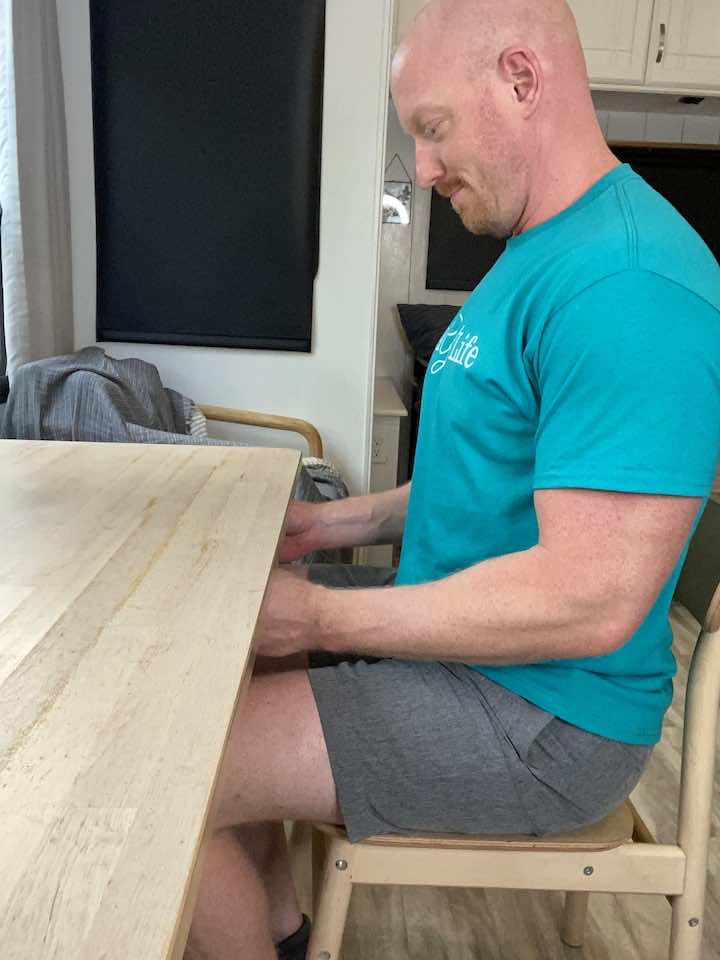
- Sit up straight at a table with your hands placed underneath, palms facing up
- Raise your hands straight up as if you’re trying to lift the table
- Hold this position for 5 seconds
- Release and repeat the movement 10 times
- This exercise helps to strengthen the muscles supporting your elbow joint and improve its stability.
2. Isometric Elbow Extension
- Sit straight at a table with your hands on the surface, palms facing down.
- Push your hands down on the table as if trying to push it away.
- Hold this position for 5 seconds.
- Release and repeat the movement 10 times.
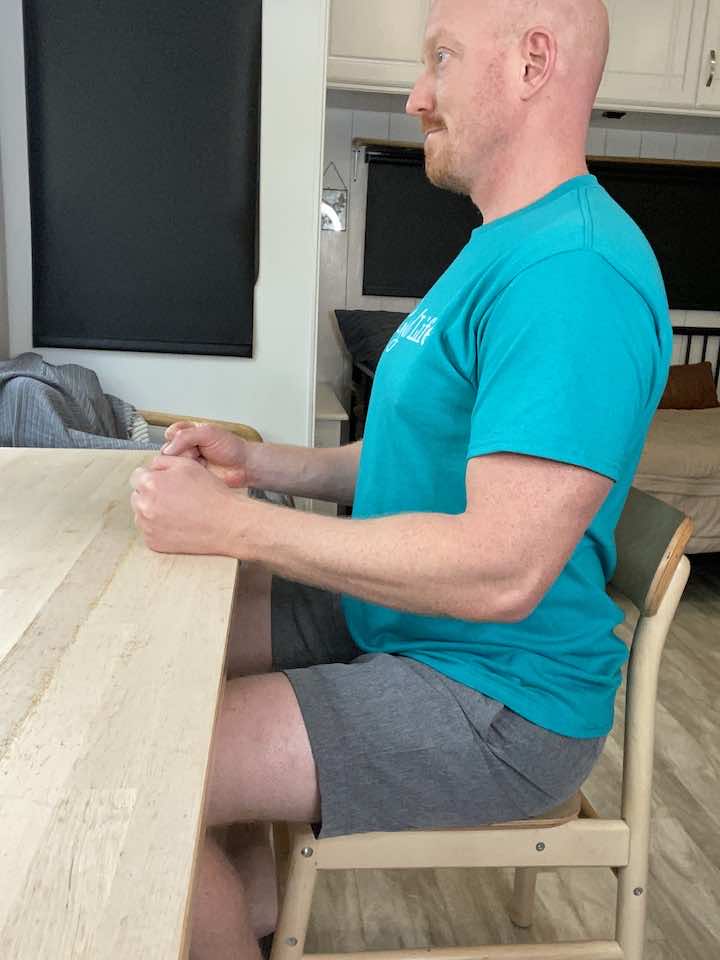
3. Elbow Flexion Passive Range of Motion (PROM)
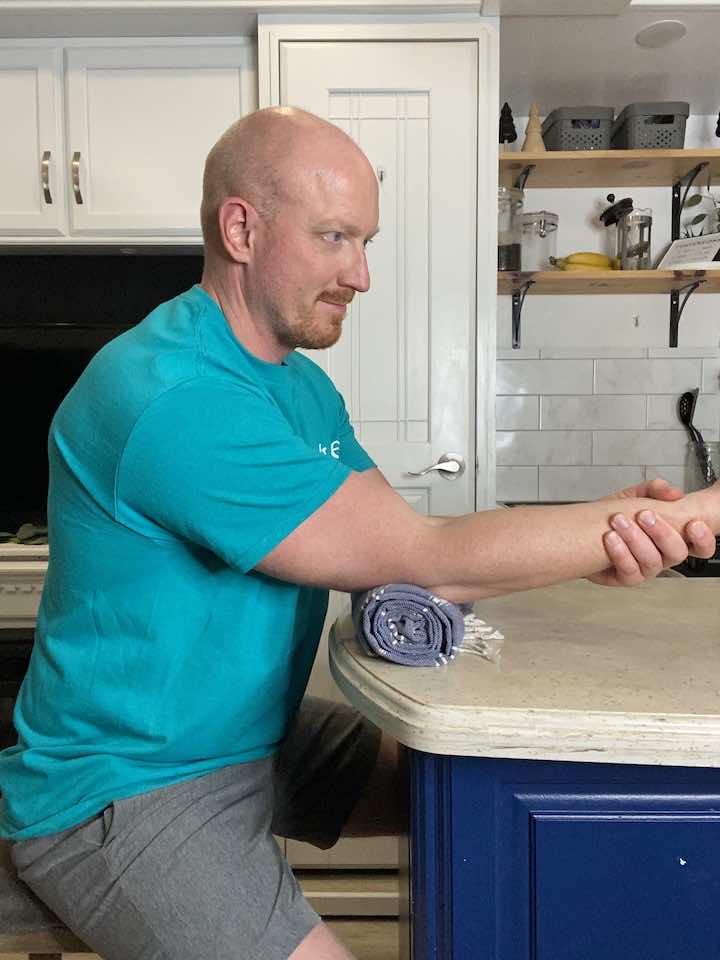
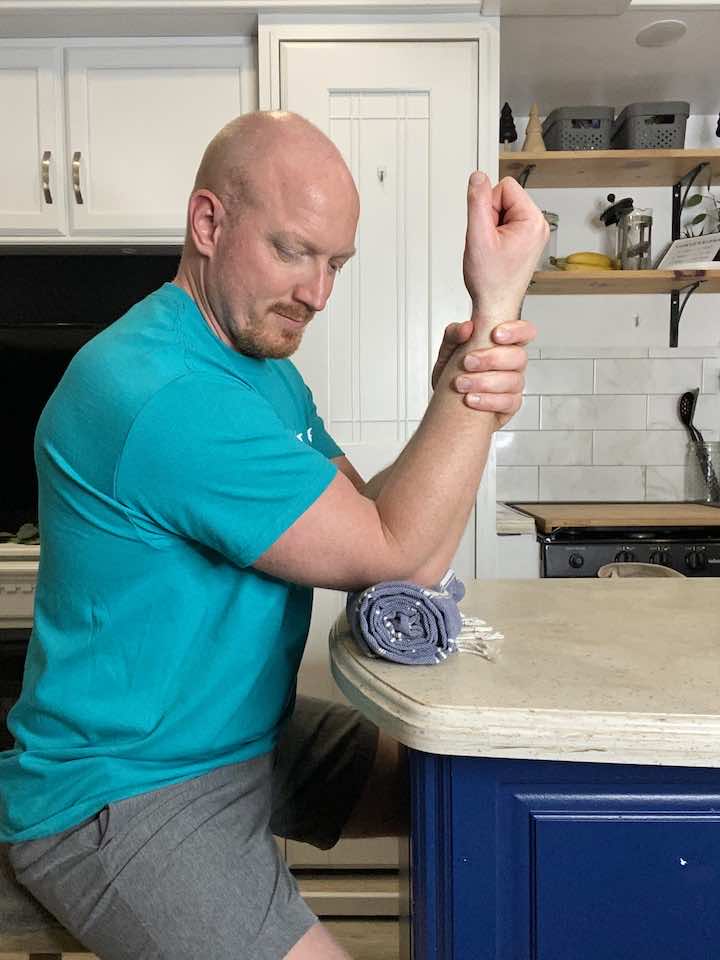
- Place a towel roll on a flat surface and position your affected arm with your elbow resting on the towel roll.
- Use your other hand to help bend the affected elbow, pulling it gently towards your body.
- Hold the stretch for 5 seconds.
- Repeat the exercise 10 times in one session, and aim to do this exercise three times a day.
4. Elbow Extension Passive Range of Motion (PROM)
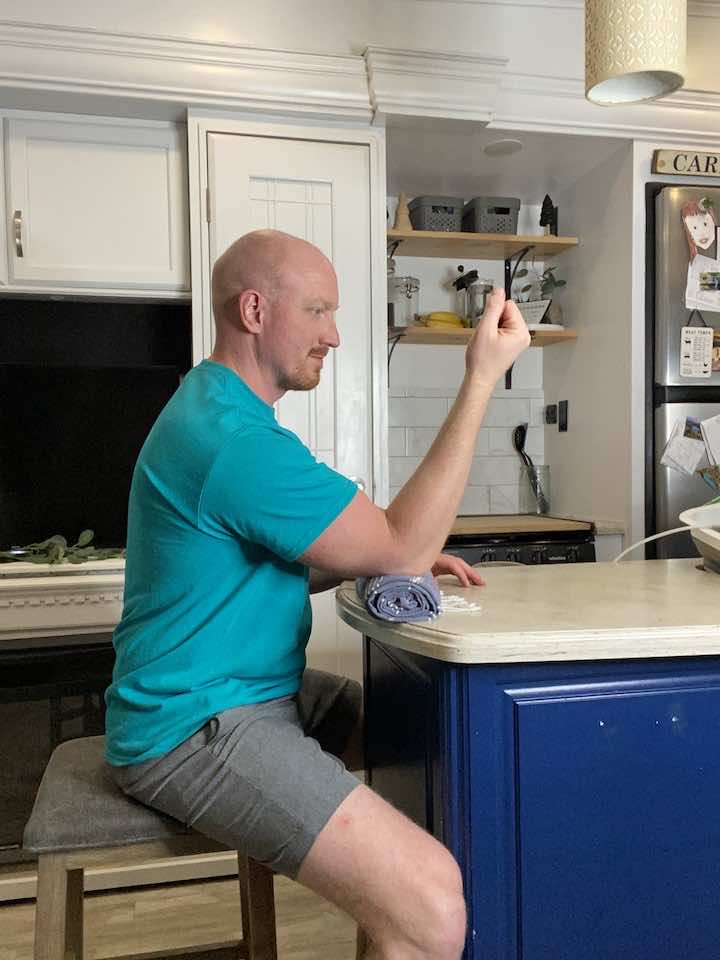
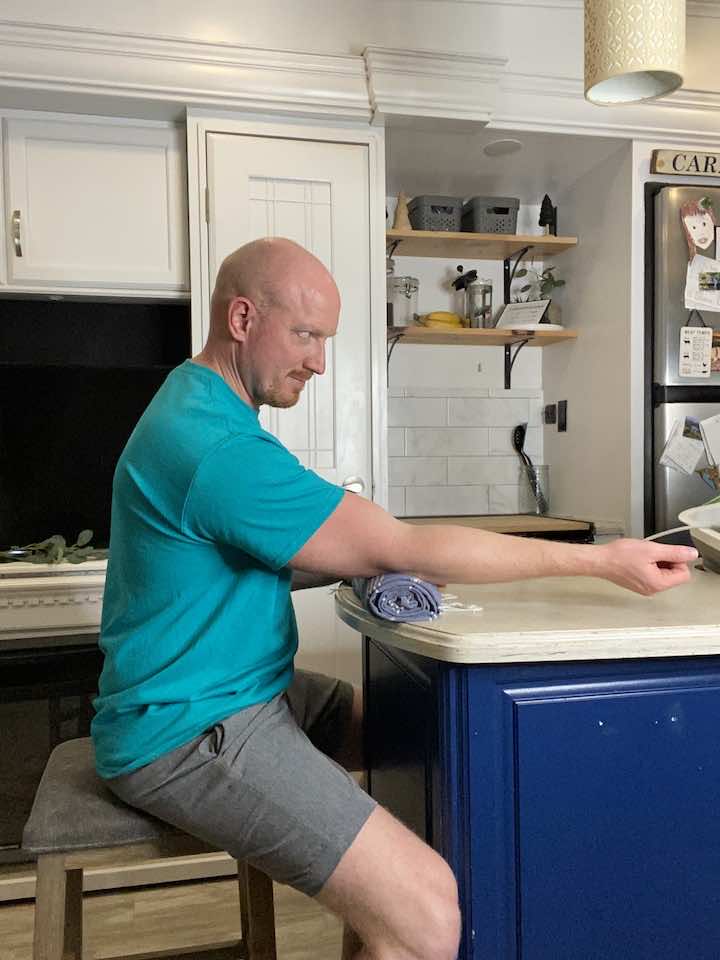
- Place a towel roll on a flat surface and position your affected arm with your elbow resting on the towel roll.
- Allow the affected elbow to straighten and have gravity assist with the stretch.
- Hold the stretch for 5 seconds.
- Repeat the exercise 10 times in one session, and aim to do this exercise three times a day.
- BONUS: Add weight to help increase the stretch.
Once these feel okay, resistance exercises can help make the arm stronger:
5. Pull Downs
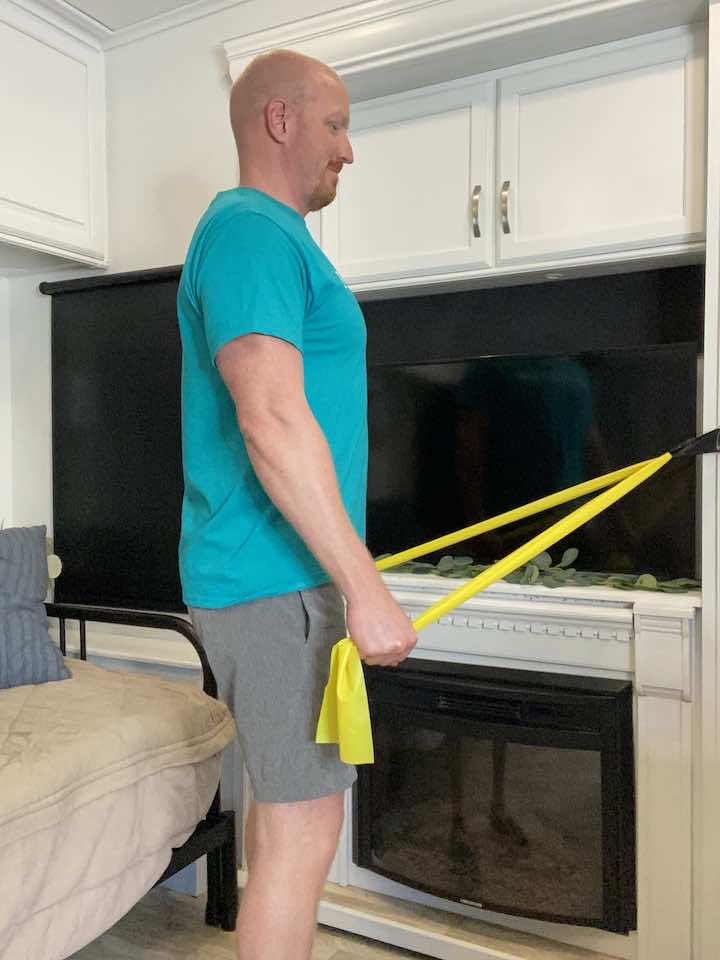
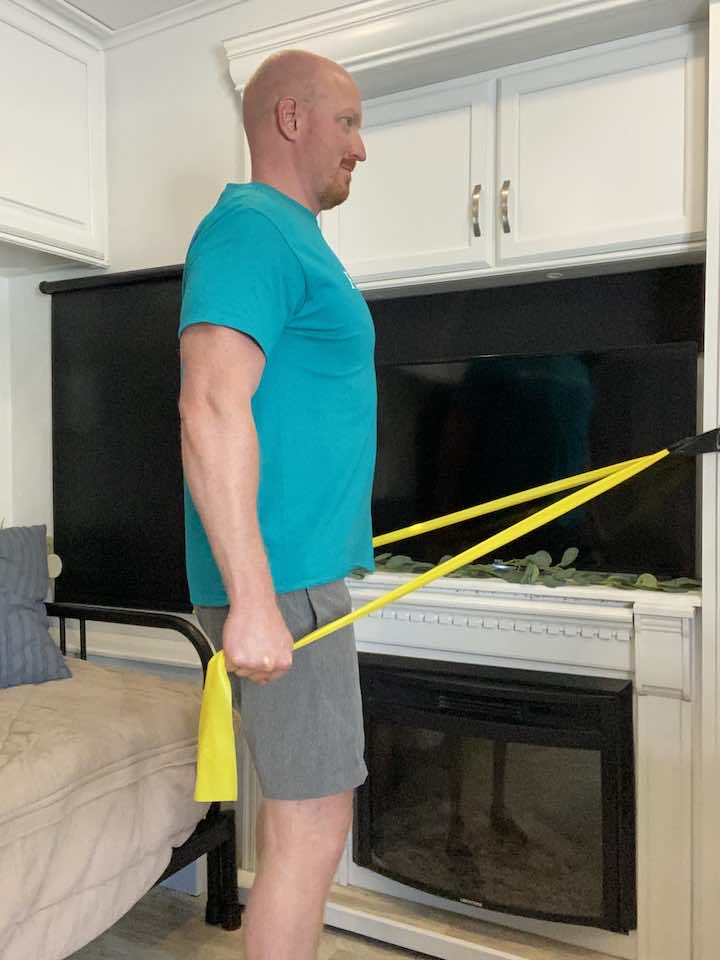
- Securely attach the resistance band to a high anchor point, such as a pull-up bar or a sturdy doorframe.
- Hold the band with both hands, palms facing forward and hands shoulder-width apart.
- Stand facing the anchor point with your arms extended upwards and your hands positioned above your head.
- Keeping your elbows straight, pull the band down towards your chest while squeezing your shoulder blades together.
- Pause at the bottom of the movement and then slowly return to the starting position.
- Repeat for 10 repetitions and aim for 3 sets.
6. Bicep Curls
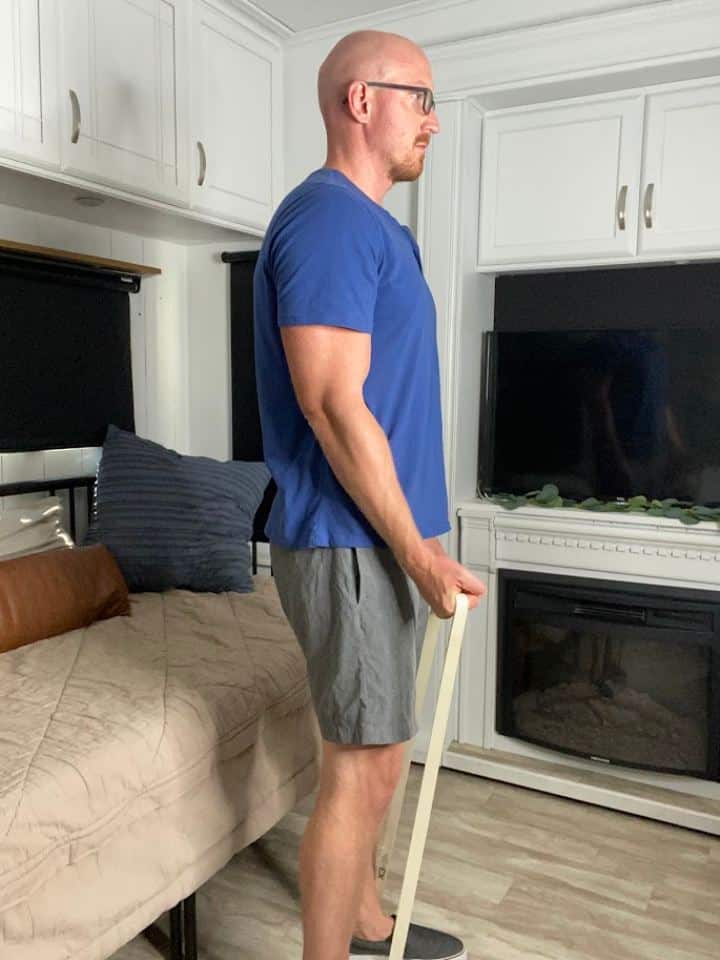
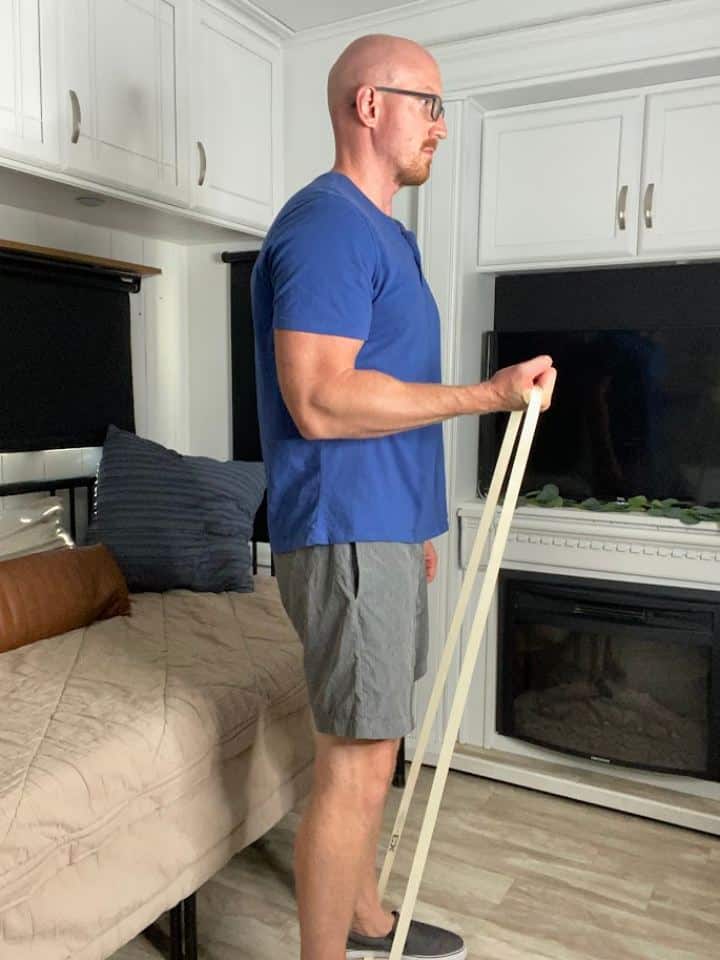
- Stand with both your feet in the middle of the resistance band, holding one end of the band in one hand.
- Keep your arms straight and by your sides, with your palms facing forward.
- Slowly bend your elbow, bringing your hands towards your shoulders while keeping your elbows close to your sides.
- Hold a moment, then slowly straighten your arms to return to the starting position.
- Repeat the movement for 10 repetitions, then switch to the other arm.
- Aim for 3 sets of this exercise.
7. Forearm Supination
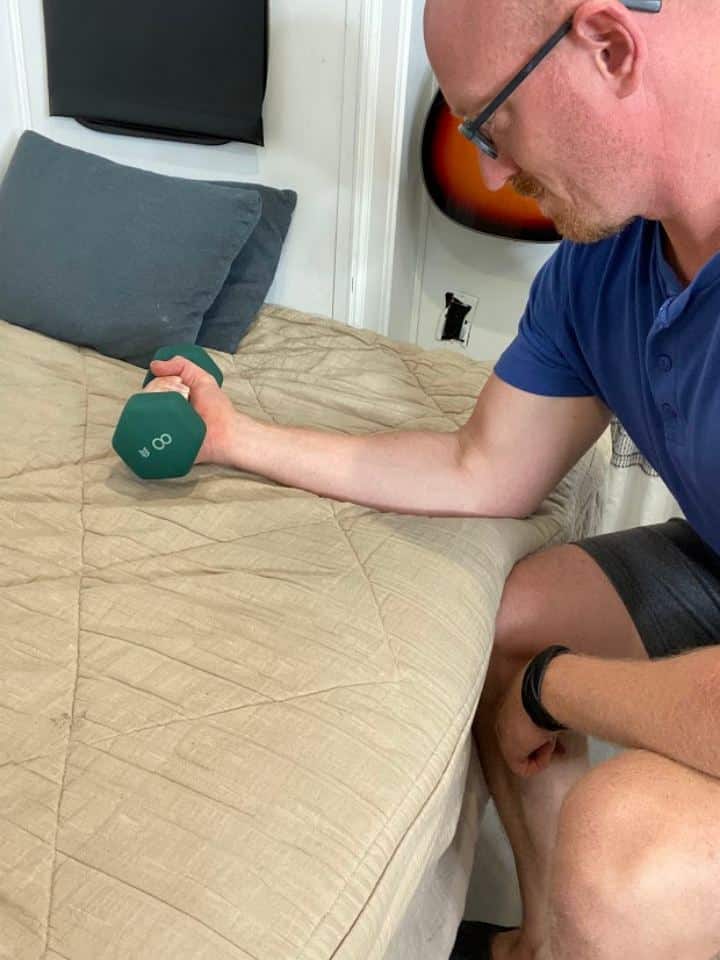
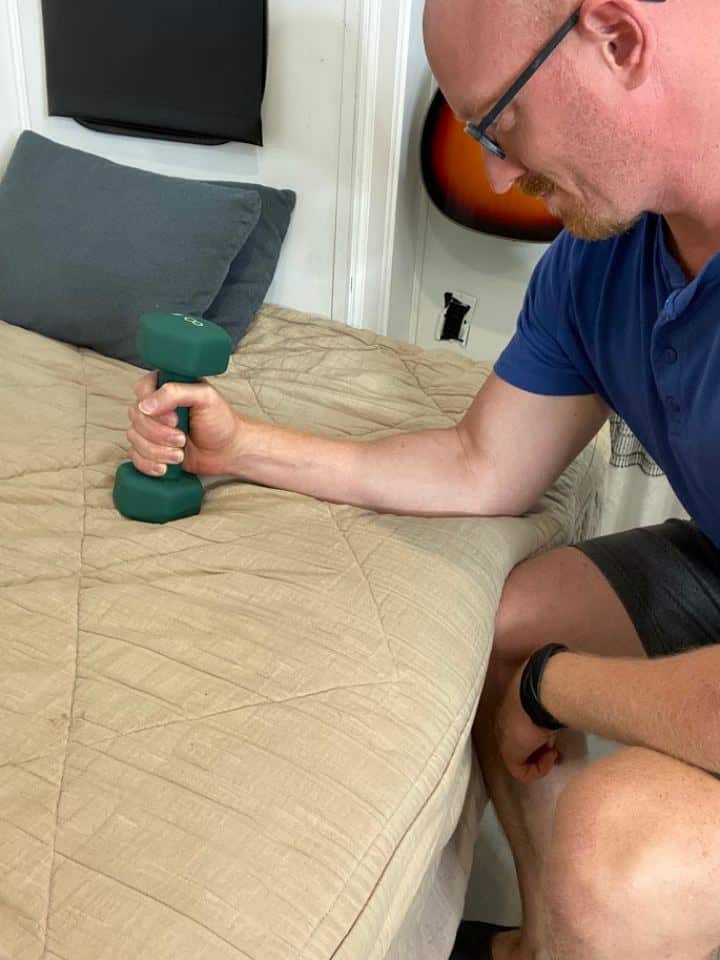
- Begin positioned just like you were for forearm pronation.
- This time, slowly turn the forearm until the palm faces up towards the ceiling, then return to your starting position.
- Repeat 10 repetitions for 3 sets.
8. Forearm Pronation
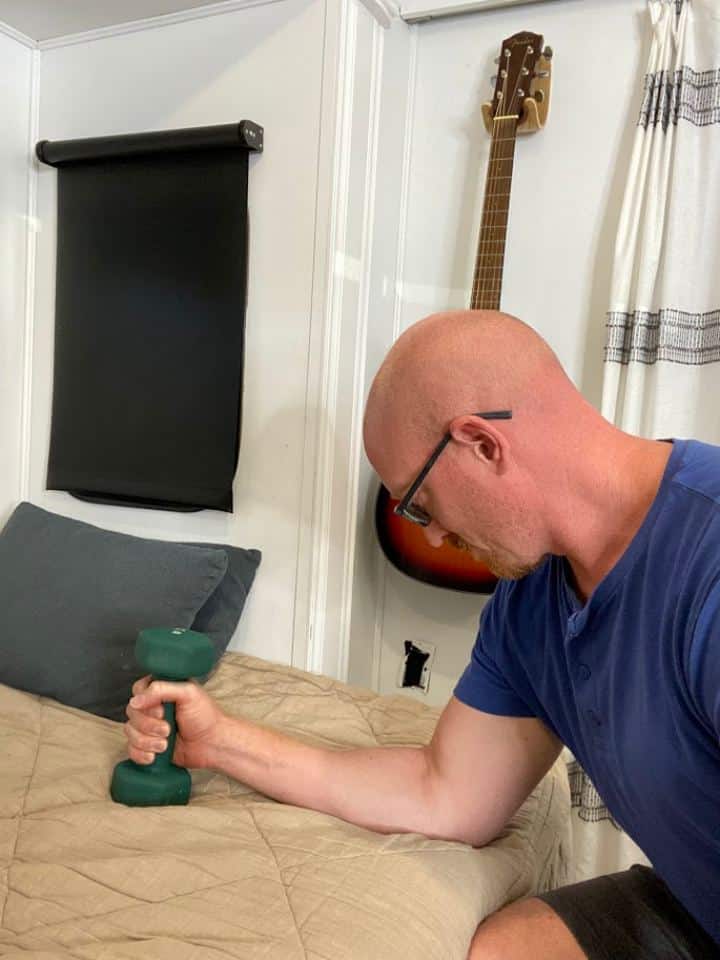
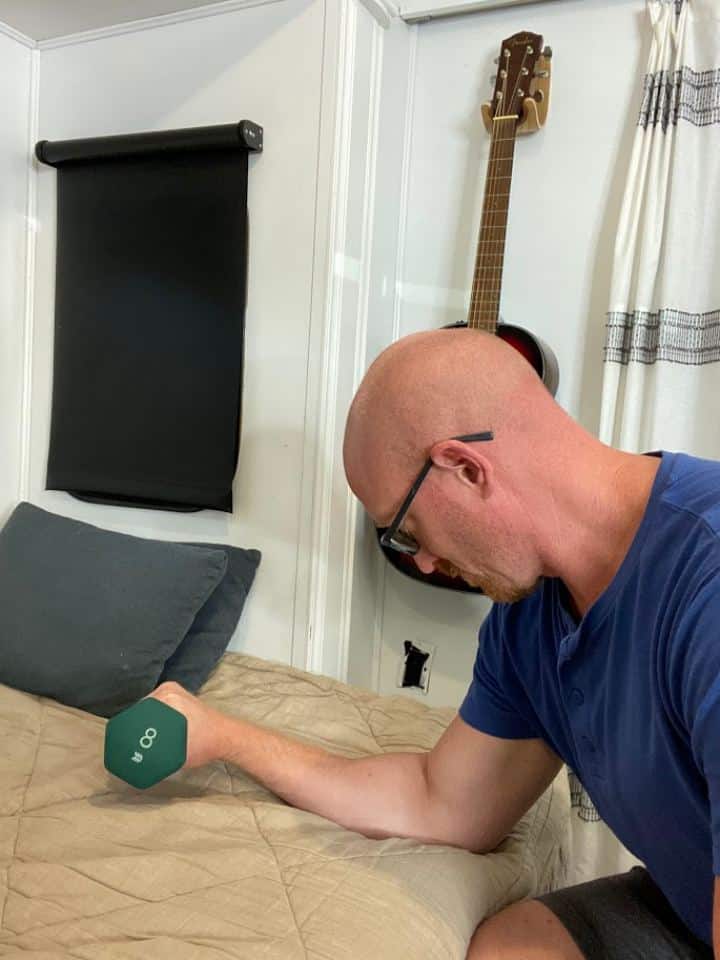
- Begin seated in a chair with the elbow supported on a surface (e.g., kitchen table).
- Position the forearm and wrist so that the thumb is facing the ceiling.
- Slowly turn the forearm until the palm faces down towards the surface, then return to your starting position.
- Repeat 10 repetitions for 3 sets.
Strengthening the muscles near the elbow, like the wrist and shoulder, is also good. This will help the whole arm be strong and work well together.
Conclusion
Taking care of a dislocated elbow is a journey. At first, it might be painful and scary, but with the right help and exercises, the elbow can get back to normal. The main thing is to be patient. Rushing or doing too much can make things worse.
It’s always good to listen to your body and your doctor. With time, care, and the right approach, you’ll be moving and using your arm like before in no time. Remember, every injury teaches us something. So, always be cautious and protect yourself, especially when playing or doing activities that might risk another injury.














